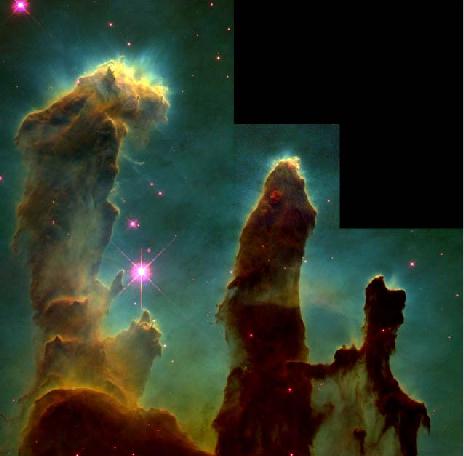Explanation: Perhaps the most famous astronomical image in recent years reveals newborn stars upon pillars of gas and dust - uncovered as researchers used the Hubble Space Telescope to explore the Eagle Nebula in 1995. This stunning picture provides a first hand glimpse of star birth as evaporating gaseous globules (EGGs) are captured emerging from pillars of molecular hydrogen gas and dust. These pillars, dubbed "elephant trunks," are light years in length and are so dense that interior gas gravitationally contracts to form stars. At each pillars' end, the intense radiation of bright young stars causes low density gas to boil away, leaving stellar nurseries of dense EGGs exposed.
Tomorrow's picture: Earth Nears Asteroid Toutatis
1999 2000 2001 2002 2003 2004 2005 2006 2007 2008 2009 2010 2011 2012 2013 2014 2015 2016 2017 2018 2019 2020 2021 2022 2023 2024 2025 |
Yanvar' Fevral' Mart Aprel' Mai Iyun' Iyul' Avgust Sentyabr' Oktyabr' Noyabr' Dekabr' |
NASA Web Site Statements, Warnings, and Disclaimers
NASA Official: Jay Norris. Specific rights apply.
A service of: LHEA at NASA / GSFC
& Michigan Tech. U.
|
Publikacii s klyuchevymi slovami:
globuly - Molekulyarnye oblaka - zvezdoobrazovanie
Publikacii so slovami: globuly - Molekulyarnye oblaka - zvezdoobrazovanie | |
Sm. takzhe:
Vse publikacii na tu zhe temu >> | |
